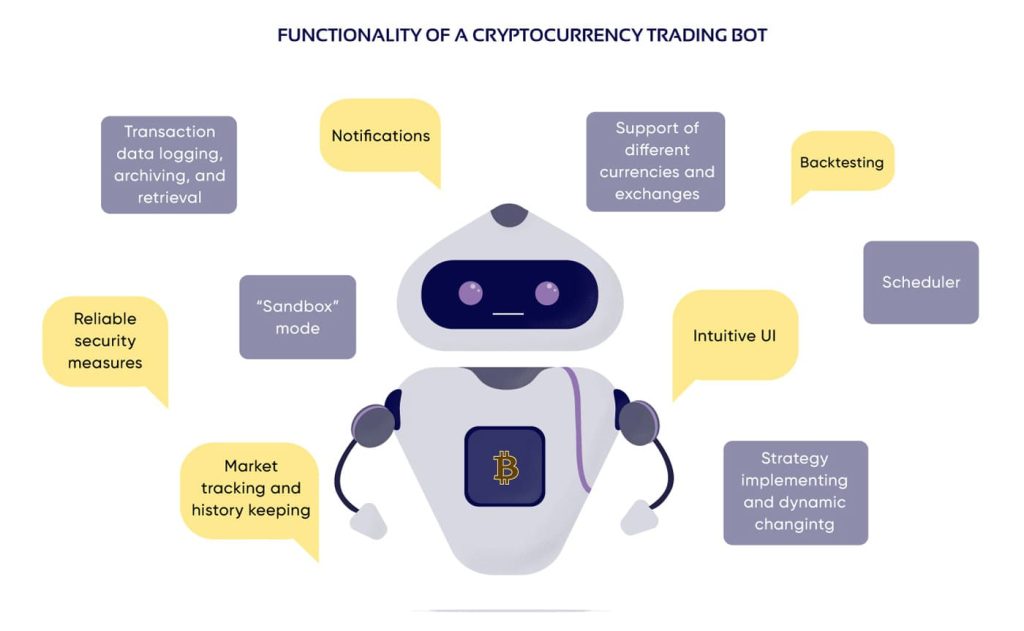
Owlab Group – Creating a Cryptocurrency Trading Bot
In this article, we will discuss a system that can forecast the value of any cryptocurrency using analysis of activity in various social networks. This system, called Cryptocurrency Sommunity Monitoring (CSM), has been used in numerous projects to help investors predict the value of many cryptocurrencies. By using data from the social networks, the CSM system has the potential to significantly increase the accuracy of predictions.
Cryptocurrency Sommunity Monitoring is a system for forecasting cryptocurrency rates using analysis of the activity in various social networks
Originally, cryptocurrencies were considered havens for criminals but they have progressed in terms of popularity and technological advancement. Currently, there are over $1.7 trillion USD and €1.4 trillion in circulation, with bitcoin ranking as the sixth largest. Cryptocurrency trading accounts for 1% of daily global exchange markets. The number of bitcoin transactions and unique accounts has increased by 60% every year over the past five years.
The data collected were filtered by using Wilcoxon Rank-Sum Tests with a 1% Bonferroni corrected p-value threshold. We removed words that were deemed extremely rare in only 1% of submissions and divided those that were more frequent as prices fell and rose. Each set of words was then transformed into concepts.
The cryptocurrency market is volatile, and a sudden collapse would hurt retail investors the most. Nonetheless, it is important to note that a meaningful drop in the value of cryptocurrency would not affect the stability or creditworthiness of the banks we rate. In fact, such a dramatic drop would not have a negative impact on our banking ratings. Look here.
The system is based on the blockchain technology, which is the foundation of Bitcoin. The technology underlying Bitcoin and other cryptocurrencies is based on a public ledger that records all transactions and ensures that only the buyer and seller can access the money they want. Furthermore, because the blockchain network is decentralized, transactions are not subject to any third-party verification.

The study explores the factors associated with the adoption of virtual currency infrastructure, offering insights for scholars and practitioners in this field. It may also be of interest to monetary authorities, developers of the Bitcoin infrastructure, and entrepreneurs. As these cryptocurrencies become more mainstream, their potential as a replacement for the established financial system is still unknown. But despite their potential to disrupt the existing banking system, the research findings are important in evaluating the impact of this emerging market.
The technology used to develop these tools is gaining momentum. The underlying concept is that cryptocurrencies are increasingly valuable because of their decentralized nature and lack a middleman. In other words, their value is tied to the likelihood of their use in some type of use. In the future, consumers may become more interested in these cryptocurrencies if they can improve on the traditional financial system.
Although this technology may seem futuristic, there are still numerous risks associated with the use of cryptocurrency for illicit purposes. More sophisticated law enforcement may reduce the likelihood of illicit use. Most governments do not investigate internet-mediated drug trade. Silk Road, for example, closed in 2014, but the markets are still flourishing. Despite the threats to public safety, many buyers and sellers of illicit goods believe that the risk of arrest is low compared to alternative forms of distribution.
The technology relies on a methodology known as cosine similarity that can measure the similarity of words and concepts. The methodology was originally developed by Burnie and Yilmaz, who trained word2vec models on processed text from submissions. These models then converted delineated words into numeric vectors, and connected words based on cosine similarity.